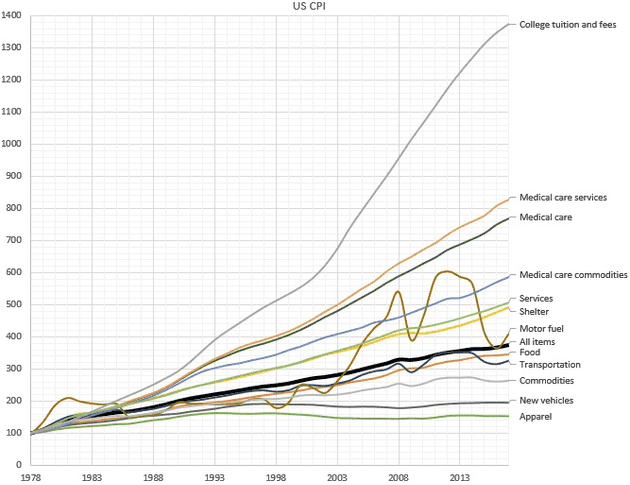Baumol's cost disease: Why prices of labor-intensive services keep going up regardless of low productivity growth?
Article: Two parallel worlds in Taiwan: Rich and Unaffordable(Traditional Chinese)
Baumol's cost disease is a phenomenon pointed out by the economist William Baumol. While rising wages are typically attributed to the growth in labor productivity, there can be upward salary pressure at jobs without significant productivity growth. This can be used to further explain why services become more expensive than goods over time (see the figure from Wikipedia).
The rise of wages in jobs without productivity gains derives from the requirement to compete for employees with jobs that have experienced productivity growth and therefore can pay higher salaries. In other words, even in areas where productivity has not been improved, the compensation of its employees will still increase due to the improvement in productivity in other industries.
The example Baumol gave is that if the musicians in a string quartet were paid less than the assembly workers in the semiconductor company, they might decide to quit to get a job in the semiconductor company. However, because the quartet needs its musicians as much as a semiconductor company needs assembly workers, the group must raise wages to keep the talent. Therefore, even though there's no productivity growth for the musicians, they still get better wages thanks to the productivity growth for the semiconductor industry.
Even though the phenomenon may not be obvious and kind of unintuitive, this theory is widely supported by economists according to an evaluation from Chicago Booth's Initiative on Global Markets. When the responses are weighted by how confident the experts’ are in their responses, 88 percent agree with the statement that “rising productivity in manufacturing leads the cost of labor-intensive services—such as education and health care—to rise.”
